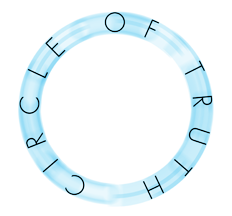Tim Isham Essay
#26 Andy Moses (Visiting Painting)
#27 Tim Isham (Response Painting)
I was struck by the organic quality of the painting that I was presented with: all wiggly and flowing together.
There was an effect like a film of oil on water; it was phenomenological, everything warped and distorted, like a fun house mirror image.
This kind of image comes out of a process, like a Hirst spin-art painting does. I’m saying that it’s an image which an artist doesn’t preconceive and then painstakingly paint. The artist instead conceives a process, and then lets the process produce the painting. There is a high degree of chance in the outcome. The palette may be carefully chosen, but the rest is more random. This is not an opportunity for narrative, or for making complex observations about art world machinations. Except possibly to simply say, here’s a methodology used to apply paint to a surface one which on one hand is totally predictable, and on the other hand is totally unpredictable.
I’ve no desire to attach a value judgment to this concept. One may like it or not as an image or as an idea. I’ve been asked to view this image and respond with an image of my own. Options might be to do a painting in a similar way, react to the content of the narrative, use a similar palette, interpret what I believe may have been the artist’s intent, etc. The high-degree-of-chance-in-the-outcome factor in the work was the particular aspect which I was responding to in my own painting: I wanted to make an answer painting. He/she was saying, “Here’s a painting based on a process utilizing a high degree of chance.” My answer would be, “Here’s a painting in which nothing is left to chance.” My painting would also lack any narrative, but would be eked out, leaving nothing to chance, and leaving no doubt about it.



